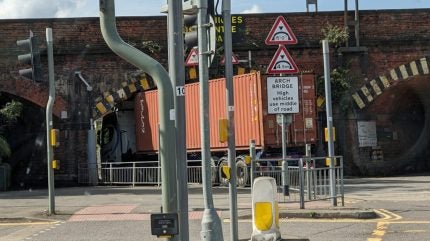
UK’s Network Rail is set to trial a new technology designed to reduce train delays following “bridge strikes”, with initial focus on the East Coast Main Line.
Network Rail noted that 90% of these strikes are caused by high-sided vehicles, including heavy goods vehicles (HGVs). The trial forms part of Network Rail’s broader strategy to reduce bridge strikes.
The £50,000 ($61,102) trial will employ cameras and sensors to provide assessments of bridge conditions post-incident, potentially reducing response times from hours to seconds.
The Harlaxton Road bridge in Grantham, a frequent site of vehicle strikes, will be the focus of the trial.
In the past nine months, this Victorian-era bridge was hit 11 times with three incidents occurring within a single week in November last year.
The total cost of these strikes at the Harlaxton Road bridge to the taxpayer has surpassed £600,000 due to damage and associated train delays.
The installation of the new remote monitoring equipment will alert engineers in real-time and provide immediate access to data and video footage, allowing for a quicker determination of the bridge’s safety.
The cameras are designed to provide visual indications following a bridge strike whereas the sensors will measure the impact of the strike and assess the bridge structure and rail tracks.
Network Rail route engineer Michael Clegg said: “We work tirelessly to reduce the needless disruption caused by bridge strikes, which nationally cost the British rail industry about £20m a year in delays, cancellations and repairs.
“While we know we cannot prevent all future incidents, this technology will cut the inspection time after a bridge strike from hours to seconds in many cases.
“This means we can have trains running again much sooner after a bridge strike, providing a boost to the reliability of the railway and saving potentially hundreds of thousands of pounds.”
If successful, the technology is expected to be rolled out to other bridges in Grantham and beyond.
Last year, Network Rail invested £1.3bn ($1.67bn) into safety and rail infrastructure in Scotland.
The investments include a £730m agreement with AmcoGiffen and Story for buildings and civil works, a £150m lot agreement with Taziker Industrial to deliver minor civil works, and a £420m agreement with QTS for geotechnical and major civil projects.



